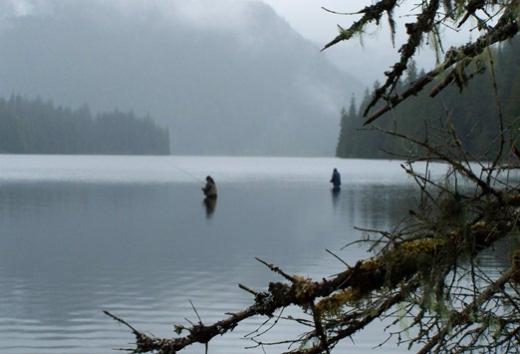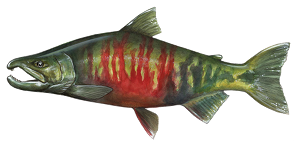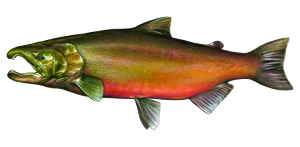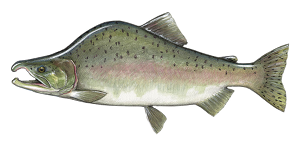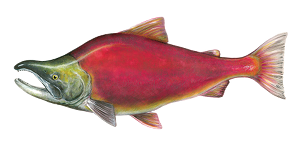Tongass National Forest
Goals
There’s nothing quite like casting a fly to schools of salmon and opportunistic Dolly Varden beneath the canopy of the southeast Alaskan rainforest. It’s primal, and a little eerie, but it’s also one of the most unique adventures an angler can undertake.
The Tongass National Forest is the crown jewel of the country’s national forest system. At 17 million acres, this magnificent landscape of western hemlock, Sitka spruce, western red cedar and yellow cedar trees is part of the world’s largest remaining intact temperate rain forest, and hosts some of the rarest ecosystems on the planet.
The Tongass comprises thousands of mist-covered islands, deep fjords, tidewater glaciers and soggy muskegs that provide ideal habitat for healthy salmon and trout populations, and some of the best angling opportunities in the nation. According to the U.S. Forest Service, the Tongass includes roughly 17,000 miles of clean undammed creeks, rivers and lakes that provide optimal spawning and rearing conditions for the region’s copious wild Pacific salmon and trout.
The Tongass is both a sport and commercial fishing paradise. Besides sustaining the cultures and lifestyles of local residents, including three coastal tribes, salmon and trout employ one in 10 people in the region and contribute an estimated $1 billion to the southeast Alaska economy. Despite its bounty and unique role as America’s “last salmon forest,” the Tongass faces threats. About 65 percent of the Tongass’ salmon and trout habitat is not Congressionally protected at the watershed scale and remains open to development. Trout Unlimited and our partners in the commercial and recreationa fishing industries are asking Congress to protect the Tongass’ richest resource – its wild salmon.
Tactics
Trout Unlimited, in collaboration with fishermen, scientists, land managers, GIS experts and others, has developed a strategy for protecting in perpetuity the Tongass’ most high-value salmon and trout watersheds. It’s called the Tongass 77. This legislative proposal grew from peer-reviewed science and state-of-the-art GIS tools that identified the top watersheds for salmon and trout not currently protected from development. These 77 watersheds comprise 1.9 million acres of the Tongass. Based on their outstanding habitat values, the highest and best use of these 77 watersheds should be for the production of salmon and trout. Trout Unlimited, together with a growing coalition of commercial and sport fishermen and other salmon advocates, is urging Congress to enact Tongass 77 legislation to ensure the Tongass remains America’s salmon forest for current and future generations.
While Tongass wild salmon and trout are currently healthy and abundant, there are a variety of threats that could harm the future productivity of these fish. These threats include several initiatives that would privatize large swathes of the Tongass for development and resource extraction, as well as dozens of hydroelectric dam proposals and new mining activity. Climate change impacts and funding cuts for research programs that guide conservation and restoration efforts are also threats.
The troubling history of the Pacific Northwest and California, where salmon and trout runs have disappeared or drastically declined, foreshadows the types of problems that could be repeated in southeast Alaska unless government agencies, lawmakers and the public act to make fish habitat conservation and restoration top priorities. In the Tongass, the opportunity still exists to ensure salmon and trout, and the people who depend on them, enjoy a healthier and more stable future than their Pacific Northwest and California neighbors.
Victories
In December, 2016 the U.S. Forest Service finalized an amendment to its Tongass Land and Resource Management plan that includes conservation measures for the Tongass 77. The decision is a major step toward safeguarding fish and wildlife across wide areas of the Tongass National Forest. In addition to increased conservation standards for the Tongass 77, the amendment provides for a gradual transition of the Tongass timber program from one based on old-growth logging to one based on sustainable young-growth forest management.
Staff Contact
Mark Kaelke
Trout Unlimited, Southeast Alaska Project Director
907-321-4464
Mark Hieronymus
Trout Unlimited, Southeast Alaska Sport Fishing Outreach Coordinator
907-209-9770
Austin Williams
Trout Unlimited, Alaska Forest Program Director
907-227-1590
Author of this Page
Jenny Weis
Communications Director, Alaska Program, Trout Unlimited

